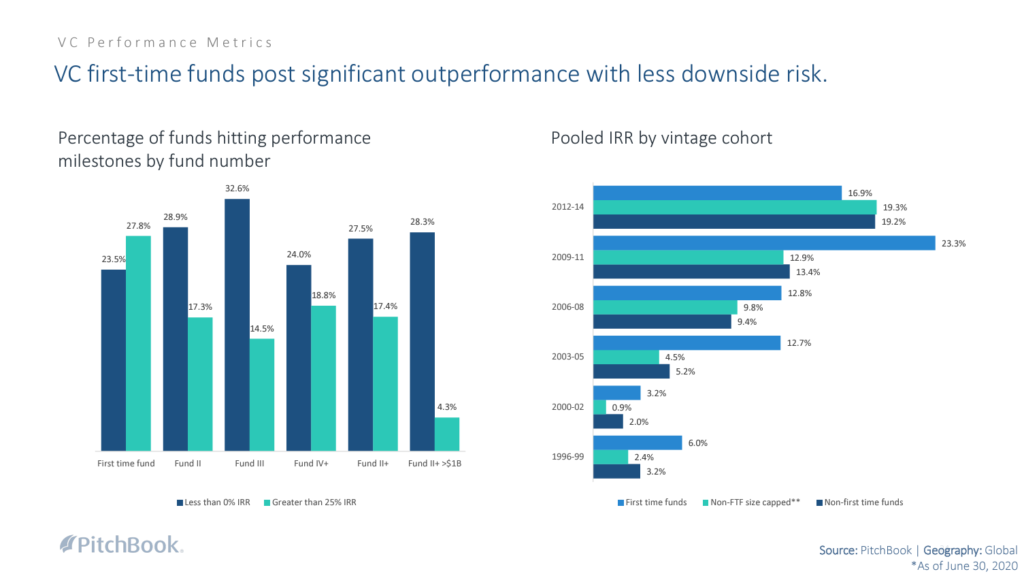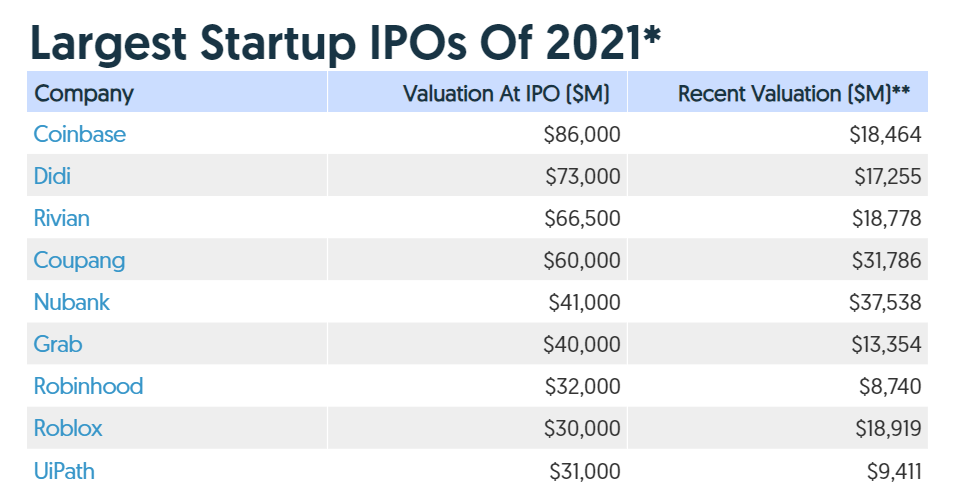In venture capital circles, the most widely discussed trend of 2024 (outside of AI) has been the concentration of capital into “venture banks” like Andreessen Horowitz, General Catalyst and Thrive Capital. The household names of venture capital have had a blockbuster year, while others carefully ration the tail-end of their last fund.
The first quarter opened with Andreessen Horowitz and General Catalyst scooping up 44% of the available capital. 2024 is closing on a similar note, with 9 firms having captured more than half of all funds raised so far. The 30 most capitalized firms this year collectively represent three quarters of the pool raised by at least 380 funds.
However, the real anomaly is not how much the large funds have raised, but rather how poorly everyone else has done. Why has the bottom fallen out of the market for smaller funds, if the giant firms are still able to vacuum up capital?
There are a range of opinions on this question: Consider the insights shared by Sam Lessin, in The Venture Capital Regatta; Yoni Rechtman in Return, Bifurcation or Megafund Dominance; or Charles Hudson, in Three Future States of the Early-Stage VC Ecosystem. Both are respected investors with valuable perspectives but a slightly different set of base assumptions, so triangulating on objectivity is difficult.
Ask a hundred GPs or LPs where they draw the line between small funds and large funds, or how they define multi-stage and multi-sector strategies, and you will get a hundred different answers. The lack of standard definitions and common understandings has dramatically hindered productive discourse about venture capital over the years.
Importantly, it has obscured the manner in which multi-stage venture capital has diverged from the rest of the market. Today, it operates a novel model for startup investment, targeting a new class of LPs with a very different premise.
A Rapacious Playbook
In 2011, Jay Levy of Zelkova Ventures wrote an article about the conflicting interests involved in insider pricing. His point was simple: when investors led rounds for existing portfolio companies, their desire for greater ownership would be outweighed by their need to show performance.
Two things are striking about this article:
- Jay’s concern probably seems alien or overly-dramatic to anyone who entered venture capital within the last decade. Today, it’s just the game on the table.
- It is also likely to be the single largest contributing factor to the pricing bubble that grew during ZIRP and exploded in 2022, if you follow the incentives created.
In a rational market, where VCs are all stage-specific, each round of investment has a different lead investor. That means, at regular intervals in the company’s development, it will be valued by a neutral third-party. Outside investors that want to maximize ownership will go up against founders that want to limit dilution. From that tension, we expect a generally fair outcome to emerge.
Venture capital relies on this tension, and the increasing financial savvy of investors as the investment moves downstream, stewarding companies toward exits. From qualitative analysis at the earliest stages to the quality of cash flow at maturity; you move the dial from founder strength to financial performance as you go from pre-seed to IPO, and so the expertise of investors evolves in parallel.
Multi-stage firms have a different (and fairly rapacious) view on this process. Instead of inviting scrutiny of the value of their portfolio companies, their strategy is to keep that in-house, or within a network of associated firms. Rather than rational pricing through the tension of buyer and seller, they have embraced the jagged edge of what Jay Levy described: why worry about valuation if pricing can be a competitive advantage?
Want 3-4x markups on investments to show LPs? Just do subsequent rounds at 3-4x and get them rubber-stamped by networked investors. With “performance” taken care of, it’s easier to raise more capital to feed portfolio companies, fuelling aggressive growth to grow into those markups. It’s putting the cart before the horse, compared to conventional venture thinking, but it has a certain brutal charm.
So, we’re beginning to see that the ‘capital as a competitive advantage’ playbook didn’t expire with ZIRP. A decade of cheap capital was what it took to prove the model, and today it just needs a different class of LP to back it. Indeed, multi-stage GPs appear to have spent 2023 with their heads down, consolidating around the best-looking secondary opportunities (SpaceX, OpenAI, Anthropic, Anduril) ahead of a grand tour in the Middle East. Sovereign wealth, with giant pools of capital and no great pressure on liquidity, are complementary to the traditional large institutional LPs for this strategy.
Exploiting Venture Capital’s Flaws
As multi-stage firms have expanded their funds under management, they’ve had to similarly scale their ability to capture market share. This has been solved through a fairly innovative list of features, each of which exploits a different dynamic of venture markets:
Platform Teams: Leaning into size as an advantage, multi-stage VCs have built platform teams with the advertised intent to offer support and resources to portfolio companies. In reality, portfolio teams are the serfs of the venture world, managing the burden of a large portfolio for a relatively small team of partners while generally adding little value for founders.
Signalling Risk: VCs are wildly vulnerable to herd behavior. An example of this is “signalling risk”: concern about the signal of how other investors respond to a startup. Despite being obviously silly, this essentially means “tier 1” firms get prima nocta on every founder they touch, so they scoop them up en masse with scout programs and EIR initiatives.
Backing GPs: While the rest of the market struggles, multi-stage funds can raise additional vehicles through which they become LPs in emerging managers. They look like the good guys, supporting the underdogs, broadening the market and encouraging competition. In fact, they are entrenching centralized positions in the relationship model of venture capital.
Operator Investors: In the last decade, there has been an ideological shift towards the idea of ‘operator investors’. Former founders are seen as the ideal archetype for venture capital, having first-hand experience building companies. As it turns out, they don’t really make for better investors, they’re just extremely well networked and have credibility with founders.
Procyclical Pricing: A huge amount of valuation wisdom has been discarded over the last decade, as the industry as a whole adapted to deal velocity with cruder pricing models—e.g. revenue multiples, raise/ownership, etc. These common practices lack critical specificity and amplify volatility in the market, a problem for venture firms that rely on rational pricing.
The Value of Venture Beta
The product of this multi-stage approach to startup investment is “venture beta”: returns will broadly track the market, while they expand in network, assets, and market share. For the largest institutional LPs, like sovereign wealth, this is fine: acceptable returns with minimal volatility, and they can brag about funding innovation with the support of the most prestigious firms.
Further out, this model’s success depends on whether it can produce companies that are attractive to public market investors or private market acquirers. Up to now, large infusions of capital with crude pricing have produced sloppy, undisciplined businesses. The IPO market is still reeling from being force-fed companies with poor financial health in 2021. Whether this misalignment can be fixed, or is inherent to the strategy, has yet to be seen.
Some early stage VCs have commented that multi-stage VCs still rely on small, contrarian firms to identify opportunities before they are ‘legible’. It seems more accurate to say that small firms are just another source of signal about new market opportunities for the mutli-stage strategy, rather than a crucial part of the chain. Scout programs, hackathons and accelerators all create redundancy for the competence of small firms in this capacity.
For Those Seeking Alpha
While historical patterns would indicate that the funding will bounce back for everyone else next year, it is worth some urgent reflection on how the growing share of multi-stage capital influences the market.
In the short term, multi-stage firms tapping into a new LP base shouldn’t have a huge impact on smaller funds, although many of their usual LPs will be spooked by the shift. GPs should have a good answer for how they adapt to this reality. How can they compete against the capital, network and brand strength of multi-stage firms in future? With increasing skepticism about the “value add” from venture capitalists, what do they offer founders that the multi-stage firms can’t?
For GPs with high domain expertise in hard sciences, there is enough evidence of outperformance to differentiate them from large generalists. For everyone else, the burden of proof is going to be higher than ever, and will require becoming disciples of venture theory: Read everything there is about portfolio construction, historical performance, decision making, biases and strategy, and build a rock-solid case for LPs that you deliver on the two critical fronts:
- The potential to deliver excellent returns, in contrast to the mediocre performance of the largest firms. Not by swinging for the fences on every hit, but with properly optimized portfolio, price discipline, and solid understanding of the underlying theory.
- Backing the best founders with the most important ideas. However good a multi-stage fund gets at identifying early stage opportunities, their model will always bias towards consensus themes and capital-intensive ideas. It is a limitation.
Essentially, GPs of smaller funds need to meet divergence with divergence, and embrace the strengths of their size and strategy: contrarianism and discipline, which amount to a form of value investing for early stage companies. Finding the easily overlooked. The alpha.
The Fork in the Road
Multi-stage GPs spent the last decade cosplaying as VCs, despite their practices being opposed to the conventional rationale of venture capital. You can’t make good judgements about price vs value or question consensus themes if your existence is predicated on assigning arbitrary markups and chasing the hottest companies.
Over the last decade, many VCs have sought to emulate “tier 1” multi-stage behavior, acting out what they believe LPs and peers expect to see despite the fundamentally incompatible models. This herding around identity and behavior reflects the extreme level of insecurity in venture capital, a product of the long feedback cycles and futility of trying to reproduce success in a world of exceptions. It has also produced some extremely poor practices, and bad attitudes.
The more VCs study the history, theory and current reality of private market activity, the more conviction they can develop about their own mindset as investors. The more confidence they have, the better they will fare as individuals in a discipline where peer-validation is poison and the herd is always wrong.
If that’s not for you, then there is a lucrative future to be had working at a venture bank.
But you need to decide which path to take.














